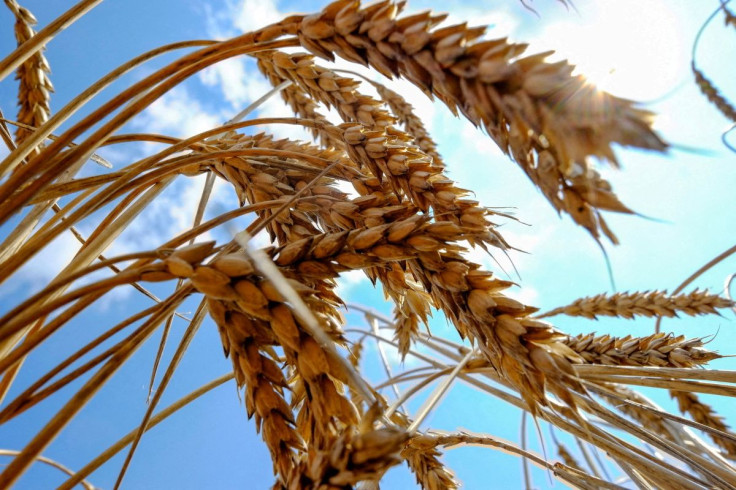Russia-Ukraine Crisis Hits Wheat Supply Causing Global Shortage

With the Ukraine crisis, the global wheat supply has been dried up and the global plan to achieve Zero Hunger by 2030, a Sustainable Development Goal (SDG), has turned topsy-turvy.
It was from the conflict-stricken Ukraine, the U.N. World Food Programme (UNWFP) sourced more than half of its supplies for the hungry last year. Because of the Russian preemptive invasion, the plight of nearly 690 million people, or 8.9 percent of the global population who go on empty stomachs every day has fallen on hard times.
With the Russian invasion of the east European nation on Feb. 24, all trade has come to stand still because ships cannot leave Ukraine's Black Sea ports. Economists and experts have predicted the worst-case scenario: exports from this region are going to be nill for a couple of years.
With the conflict between Russia and Ukraine, both wheat-producing powerhouses, prices for wheat are soaring and governments across the world are scrambling to stabilize markets.
It is doubtful whether Russia will want to keep exporting wheat as it used to do, because sweeping western sanctions may prevent Moscow to do a yeoman's job at the time of a crisis.
Ukraine, along with Russia, accounts for more than 15 percent of the world's wheat production, and 30 percent of world exports, earning it the sobriquet of Europe's breadbasket.
David Beasley, the head of the UNWFP, has already expressed his fears. "The bullets and bombs in Ukraine could take the global hunger crisis to catastrophic levels," Beasley said. On March 14, Antonio Guterres, UN Secretary-General, warned of a "hunger hurricane."
A resourceful Europe can probably weather the storm and its farmers can put up with even higher costs of basic inputs, but wheat prices will still climb up.
With high food prices, Europe's farmers will find it more expensive to get hold of raw ingredients like fertilizers because 30 percent of EU imports are sourced from Russia. Fertilizer prices have already skyrocketed by 142 percent compared with the same period in the previous year.
Janusz Wojciechowski, European Agriculture Commissioner, has already warned of a food crisis that could "increase the migration pressure on Europe."
The EU's plan to have its farming going green also may not take off as planned, which may force the 27-member trade block to entirely rethink its landmark sustainability plans.
It is going to be a serious problem for the drought-hit Middle East and North Africa where people will be forced to shell out more for basic foodstuffs like bread. Apparently, hungry people are not going to sit on the oars to have their political leaders a peaceful life. Remember it was the food shortage that triggered the Arab Spring a decade ago.
In the crisis zone are countries like Egypt, Tunisia, Algeria, Morocco, and Lebanon which are staggeringly dependent on Ukraine and Russia for wheat. Lebanon, which is passing through a severe economic crisis with inflation at a record high, imports more than half of its wheat from Ukraine.
Egypt, the world's top wheat importer, gets 80 percent of its wheat supply from Russia and Ukraine. Kristalina Georgieva, managing director of the IMF, observed recently. "I worry for Egypt," she said when asked about the Ukraine war and the IMF's response.
In fact, Algeria imports a stunning 48 percent of wheat from Ukraine and will be forced to look at other exporting nations which may further raise global prices.
Rising global food prices will impact the poorest, and least food-secure nations like Bangladesh, Madagascar, and the war-hit Yemen. Aid agencies like the UNWFP will find their money fetching less.
Many governments worldwide have started to feel the fear of hoarding and trade restrictions, forcing the G7 ministers to stress on the importance of dismantling trade barriers at a time of severe commodity market turbulence. However, there may be few takers for the G7 demand. Argentina in South America, Serbia in East Europe, and a transcontinental Turkey have already imposed or threatened to impose export bans.
Despite better-than-expected harvests in Australia, India, and to a lesser extent Canada, global wheat exports are expected to slide by 3.5 million tons compared with the pre-conflict estimates. Since January, wheat prices have soared by 62 percent from an average price of $6.93 a bushel in 2021 to over $11 a bushel.
Further straining the global supply, China, the world's largest wheat consumer, has declared a drastic drop in its winter wheat harvest. China's Ministry of Agriculture and Rural Affairs has predicted harvests could be down by more than 20 percent.
Wheat production in the U.S. has been declining steadily in recent years, 35 percent from its 2008 peak, according to official estimates.
The world has already started looking at alternative ways to respond to the wheat shortage. The European Commission has approved a $550 million aid package for its farmers. U.S. farmers have knocked on the doors of Agriculture Secretary Tom Vilsack to allow growers to plant crops on additional 4 million acres.
With the wheat export from Russia and Ukraine disrupting, the world has started to look at nations like India. However, it is a time-consuming affair and may not be within the reach of poor nations like Egypt due to high freight and transportation costs.





